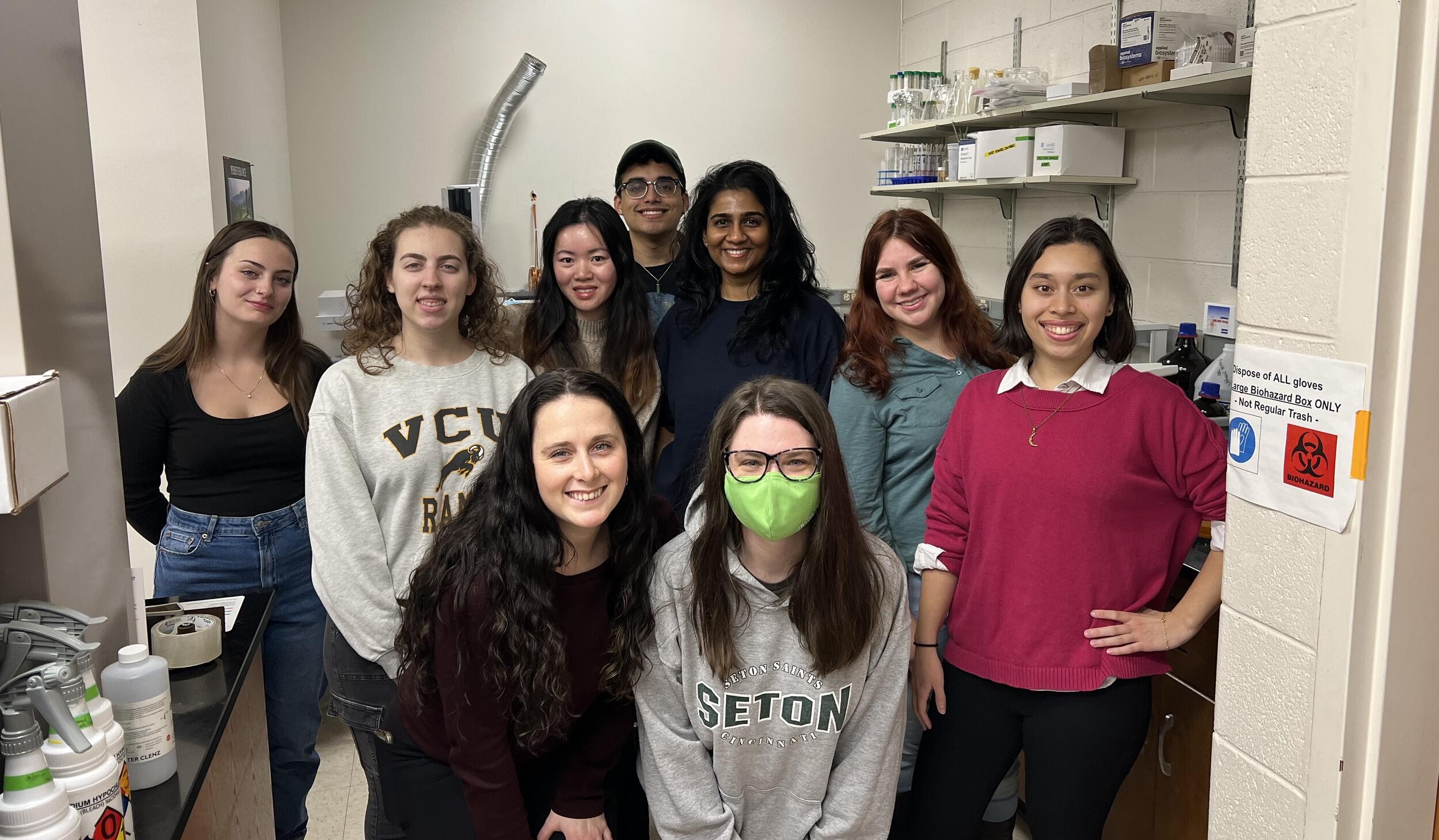
Jan. 31, 2024
VCU forensic science professor receives ASPCA grant to support animal cruelty investigations
Share this story
Forensic science can play a big role in animal cruelty cases, but while current laboratory techniques can identify which animal left DNA at a crime scene, they can’t reveal when the evidence was left. Researchers in Virginia Commonwealth University forensic science professor Christopher Ehrhardt’s lab are working to bridge that gap.
Ehrhardt, Ph.D., a professor in the Department of Forensic Science in the College of Humanities and Sciences, was awarded a one-year, $36,331 grant in December from the American Society for the Prevention of Cruelty to Animals to develop a forensic test that can determine the length of time since animal body fluid, such as blood or saliva, was deposited at a crime scene. Such a test could provide invaluable information to forensic investigators working on cases such as dog- and chicken-fighting rings.
The work in Ehrhardt’s lab began with human evidence samples, determining how much time has passed since DNA was deposited.
“Twenty years ago, defendants commonly attacked the rarity of DNA matches, suggesting that the real perpetrator was someone whose DNA was similar to theirs,” Ehrhardt said. “And now DNA profiling is so sensitive and discriminating that the challenge has shifted from identity to when and how the DNA got there: ‘Yeah, it’s my DNA, but I deposited it a year ago, not yesterday when the crime happened.’”
To determine how old a sample is, Ehrhardt and his students use an imaging flow cytometer, which interrogates a cell with a laser and takes a picture to read its fluorescence. As the sample ages and degrades over time, its fluorescence signal changes, allowing scientists to reverse-engineer the image based on the brightness of the fluorescence to calculate how long ago it was deposited.
Now, with ASPCA funding, the hope is to do the same with animal fluid samples. The first phase of the project will be to build a signature for TsD – Time since Deposition – based on changes in cellular autofluorescence that occur in animal fluids over time.
Using three types of samples – canine blood and saliva, and chicken blood – provided by Chesterfield County Animal Control, Ehrhardt and his students will collect data over a roughly six-month period to mark the changes that occur, with the intention of building predictive functions for estimating TsD. Eventually, the data would be used to create a kit for law enforcement during the investigation process.
“A big part of the grant and what I’m interested and excited by is that we’re actually going to get feedback from the people that are investigating,” Ehrhardt said. “At a minimum, we’re going to present to and get feedback from Animal Control, because they’re the ones that a lot of times are identifying these sites and collecting the samples.”
The application for such a tool is widespread, he said, with animal cruelty often featuring heavily in instances of spousal abuse as well as within larger criminal enterprises.
“It’s way more prevalent than I knew,” Ehrhardt said.
Subscribe to VCU News
Subscribe to VCU News at newsletter.vcu.edu and receive a selection of stories, videos, photos, news clips and event listings in your inbox.



